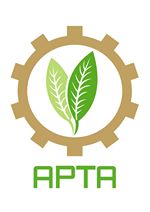Redesign of Squared-Profile Wood Sanding Machine for Work-Position and Productivity Improvement (Case study on Abu Production Handycraft, Pleret, Bantul, Yogyakarta)
Agung Kristanto(1*), Agung Saputra(2)
(1) Research Center in Back, Neck, other Joint Pain and Human Performance (BNOJPH) and Department of Industrial Engineering, Faculty of Engineering, Khon Kaen University, Thailand, Department of Industrial Engineering, Faculty of Engineering, Universitas Ahmad Dahlan, Indonesia
(2) Department of Industrial Engineering, Faculty of Engineering, Universitas Ahmad Dahlan, Indonesia
(*) Corresponding Author
Abstract
Keywords
Full Text:
PDFReferences
Bank Data Antro Pria, www.scribd.com/doc/92563075/bankdata-antro-pria, 25-Mar-2014.
Barnes, R. M. 1980. Motion and Time Study, 3rd ed. New York: John Wiley & Son.
Battini, D., Faccio, M., Persona, A and Sgarbossa, F. 2011. New methodological framework to improve productivity and ergonomics in assembly system design. Int. J. Ind. Ergon., vol. 41, no. 1, pp. 30–42.
Bridger, R. S. 2003. Introduction to Ergonomics. New York: Taylor & Francis.
Brigham F. R.. 1975. Some quantitative considerations in questionnaire design and analysis. Appl. Ergon., vol. 6, no. 2, pp. 90–96.
Declaration of Human Entrepreneurship in Jakarta, Indonesia, International Council for Small Business, 16-Sep-2015. [Online]. Available: https://icsb.org/declaration-ofhumanentrepreneurship-in-jakarta-indonesia/. [Accessed: 07-May-2018].
Del Prado-Lu J. L. 2007. Anthropometric measurement of Filipino manufacturing workers. Int. J. Ind. Ergon., vol. 37, no. 6, pp. 497–503.
Deros, B. M., Yusoff, A. R. M., Ismail, S. J and Daruis, D. D. I. 2016.Optimizing Workstation Design for Standing Work System in an Electronics Assembly Work. Iran. J. Public Health, vol. 45, pp. 17–24.
Hartanti, L. P. S. 2016. Work Measurement Approach to Determine Standard Time in Assembly Line. Int. J. Manag. Appl. Sci., vol. 2, no. 10 Special Issue–1, pp. 192– 195.
Juntaracena, K. 2016. Effect of muddy work terrain on lower extremity loading during the planting stage of rice cultivation process. Master Thesis. Khon Kaen: Khon kaen University.
Kuorinka I, Jonsson B, Kilbom A, Vinterberg H, Biering-Sørensen F, Andersson G, Jørgensen K. 1987. Standardised Nordic questionnaires for the analysis of musculoskeletal symptoms. Appl. Ergon., vol. 18, no. 3, pp. 233–237.
Kristanto and Arifin, Y. 2012. Perancangan Mesin Penyayat Bambu Secara Ergonomis, J. Ilm. Tek. Ind., vol. 11, no. 2, pp. 113–124.
Kristanto and Fanany, D. F. Improvement of Working Position on Frying Pan Lathing Process Using the Ergonomics Approach (A Case Study at WL Alumunium Metal Casting Yogyakarta), presented at the 3th International Conference on Green World in Business and Technology (ICGWBT), Yogyakarta, Indonesia, 2014, p. D-21.
Kristanto and Saputra, D. A. 2015. Perancangan Meja dan Kursi Kerja yang Ergonomis Pada Stasiun Kerja Pemotongan Sebagai Upaya Peningkatan Produktivitas, J. Ilm. Tek. Ind., vol. 10, no. 2, pp. 78–87.
Mokdad, M and Al-Ansari, M. 2009. Anthropometrics for the design of Bahraini school furniture. Int. J. Ind. Ergon., vol. 39, no. 5, pp. 728–735.
Pheasant, S. 1998.Bodyspace Anthropometry, Ergonomics and the Design of Work, 2nd ed. London: Taylor & Francis. Sinclair, M. A. 1975. Questionnaire design. Appl. Ergon., vol. 6, no. 2, pp. 73–80.
Sutalaksana, Z. and Widyanti A. 2016. Anthropometry approach in workplace redesign in Indonesian Sundanese roof tile industries, Int. J. Ind. Ergon., vol. 53, pp. 299–305
Zakerian, S. A., Garosi, E., Abdi, Z., Bakhshi, E., Kamrani, M. and R. Kalantari. 2016. Studying the influence of workplace design on productivity of bank clerks. Health Saf. Work, vol. 6, no. 2, pp. 35–42
Zare, M., Croq, M., Hossein-Arabi, F., Brunet, R and Roquelaure, Y. 2016. Does Ergonomics Improve Product Quality and Reduce Costs?. A Review Article. Hum. Factors Ergon. Manuf. Serv. Ind., vol. 26, no. 2, pp. 205–223.
Article Metrics
Refbacks
- There are currently no refbacks.
Copyright (c) 2020 Agung Kristanto, Agung Saputra

This work is licensed under a Creative Commons Attribution-ShareAlike 4.0 International License.








